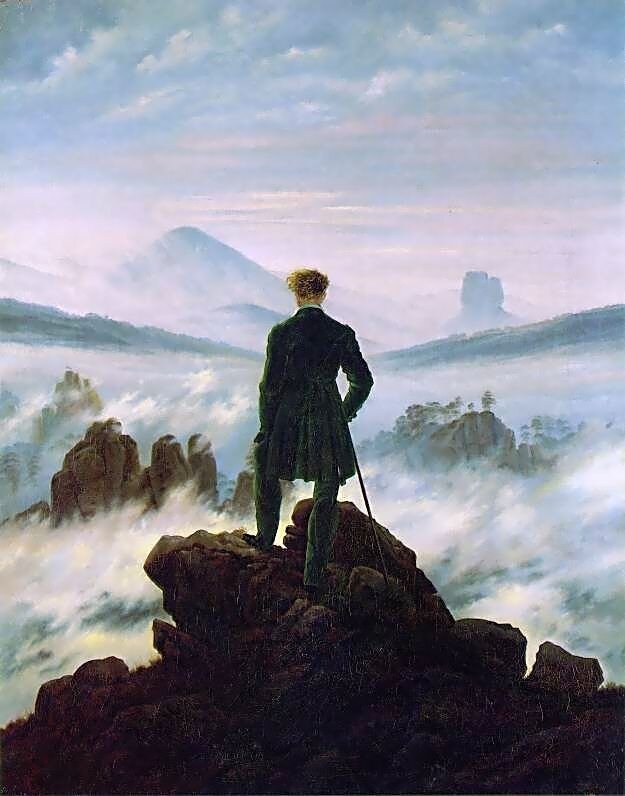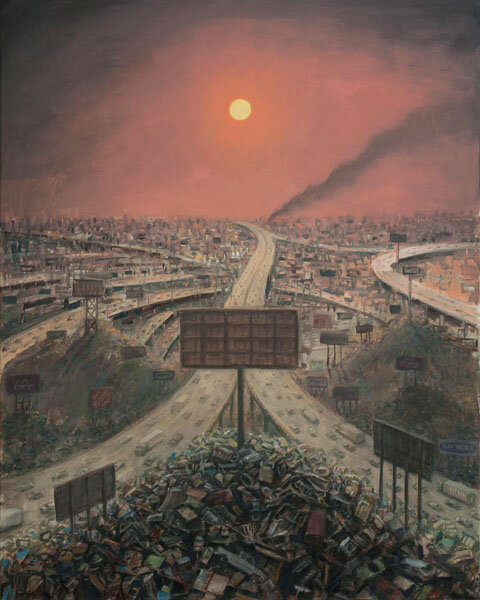One of the things that troubles me about our society is our predilection for rampant consumption. We feverishly transform the natural world around us in our quest to manufacture all the things we desire. However these actions have become so excessive that we appear to be disrupting the ecological balance of the planet. We never seem satiated, always consuming more and more. I fear it will be the end of us.
A few years ago I created a painting inspired by the German Romantic artist Casper David Friedrich and his work Wanderer Above the Mist c. 1818. I replaced Friedrich’s lone figure gazing upon sublime nature with a series of billboards sprouting from a dystopic landscape of endlessly sprawling freeways and piles of garbage. I called my painting The Land of Plenty. It was intended as a critique of our habit of hyper-consumerism and how it impacts our world.
Upon completing my painting, I recognized the composition would have greater impact if it were transformed into a panorama. So I made a preparatory drawing of my idea in graphite. The image would be similar as before, but showing a much wider, expansive landscape. Contrails would crisscross the sky, mirroring the looping freeways below.. I initially considered including a figure in my composition, similar to Friedrich’s painting, but I later opted not to, so the person viewing my work could become that solitary witness.
I wanted my painting to be massive. But as large canvases are difficult to transport, I decided to construct three separate panels instead of a single canvas. And since this would be too wide to fit on my easel, I placed the canvases on milk crates stacked along my studio wall.
I started my underpainting by giving the canvas a wash of transparent yellow for a golden glow. I then gradually began adding details to build up a complex scene with freeways, billboards, and of course, lots and lots of cars. My goal was to create a landscape that looked simultaneously beautiful and disturbing. To help with this aim, I chose a warm color palette that seemed alluring, and yet somewhat sickly.
If you look closely, you will notice that all the billboards say the word MORE. It is like an incessant exhortation to consume. Of course, the irony here is these billboards rise from vast mountains of discarded objects, cast off by a populace who has grown weary of these things. I call this painting The Promised Land. What you find in this bleak landscape of excess and waste is a sprawling metastasis upon the natural landscape. All of the billboards may promise fulfillment, but they actually signal a path to annihilation. What you discover is a landscape which represents the terminus of a society which has consumed everything in sight.





